How to Fix a Leaking Fibre Glass Pool?
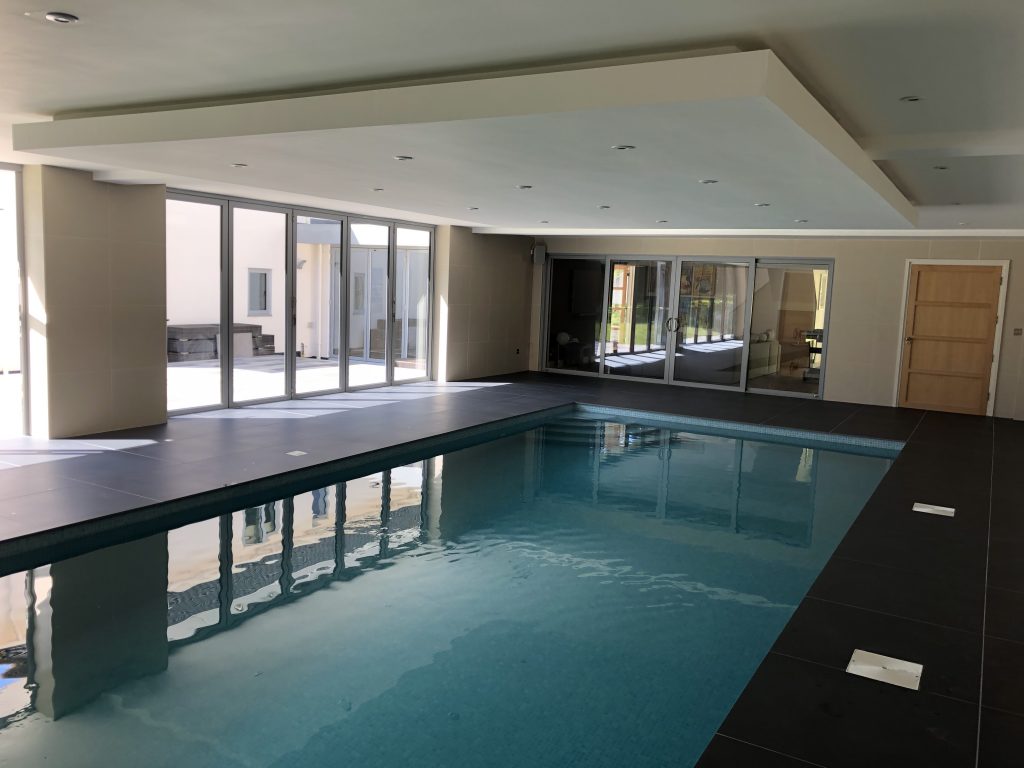
One can only imagine the shock for a potential client when he walks in to his beautiful indoor pool building only to find the pool water level has dropped and the pool looking somehow different.
Such was the case of one client when he discovered that the floor of his not so old Fibreglass pool had cracked, was losing water and the base of it was being pushed ever upward as the water pressure from the leaking pool and existing groundwater did their worst eventually causing the fibreglass structure to break its back rendering the pool utterly useless.
After the initial shock subsided we were approached, meanwhile insurers had been notified. After various discussions and cost proposals between the relevant parties it was agreed the insurer would finance a suitable replacement.
We quickly established that the root cause of the problem was ground water, it was essential that dewatering measures were improved and made to work correctly to ensure that this could not happen again.
Our challenge having been awarded the contract was how to:
- Remove the existing shell from a fully finished building.
- Remove both the finished floor screed insulation and underfloor heating pipework.
- Excavate for a new reinforced concrete pool within the existing building, moving the new pool away from the existing foundation walls to ensure they were not compromised and whilst keeping all the existing internal tiled wall finishes, ceilings doors and windows etc in perfect order.
- To complicate matters the gardens were immaculate and the nearest loading point some 25m from the pool building.
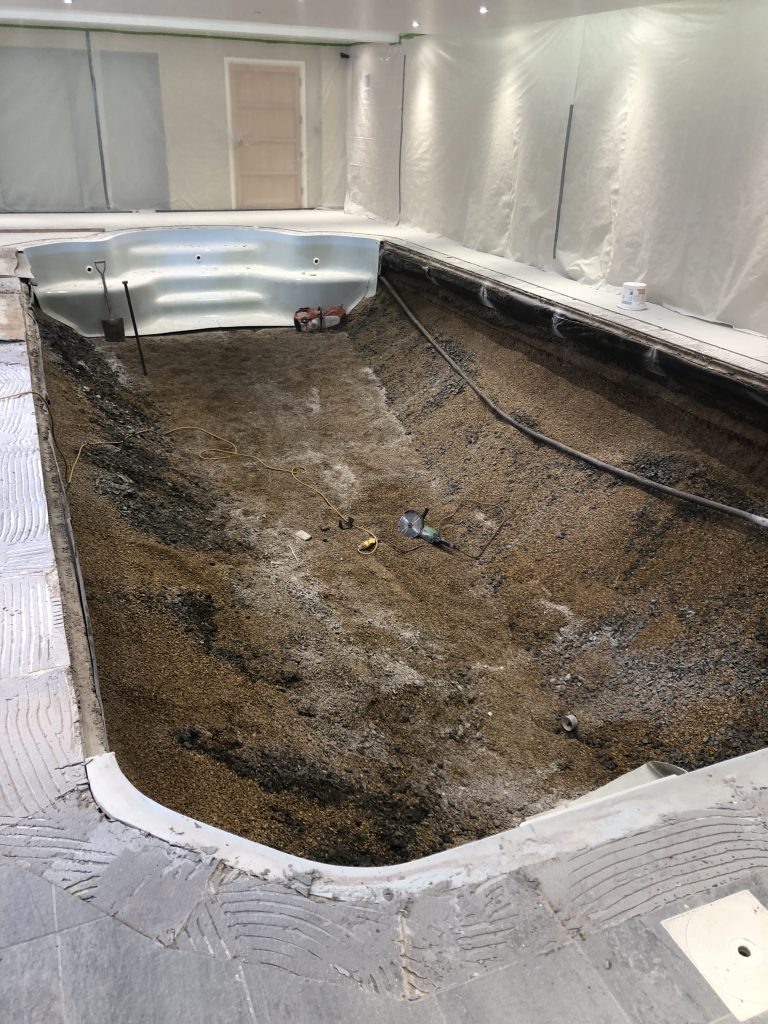
The existing pool was easily cut up in to manageable sections and removed from the building and site via a new temporary surface laid over the lawns and terraces to protect them.
A small I tonne excavator was manoeuvred into the building and in to the hole to begin the job of excavating out the existing hole to accommodate a more substantial structure.
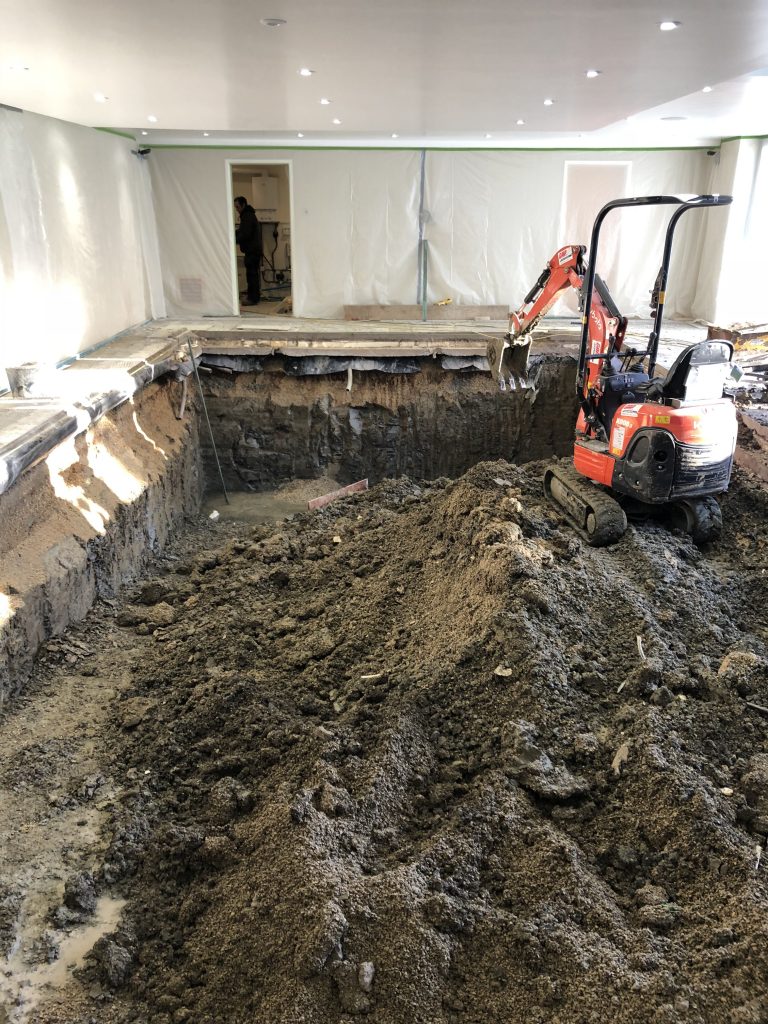
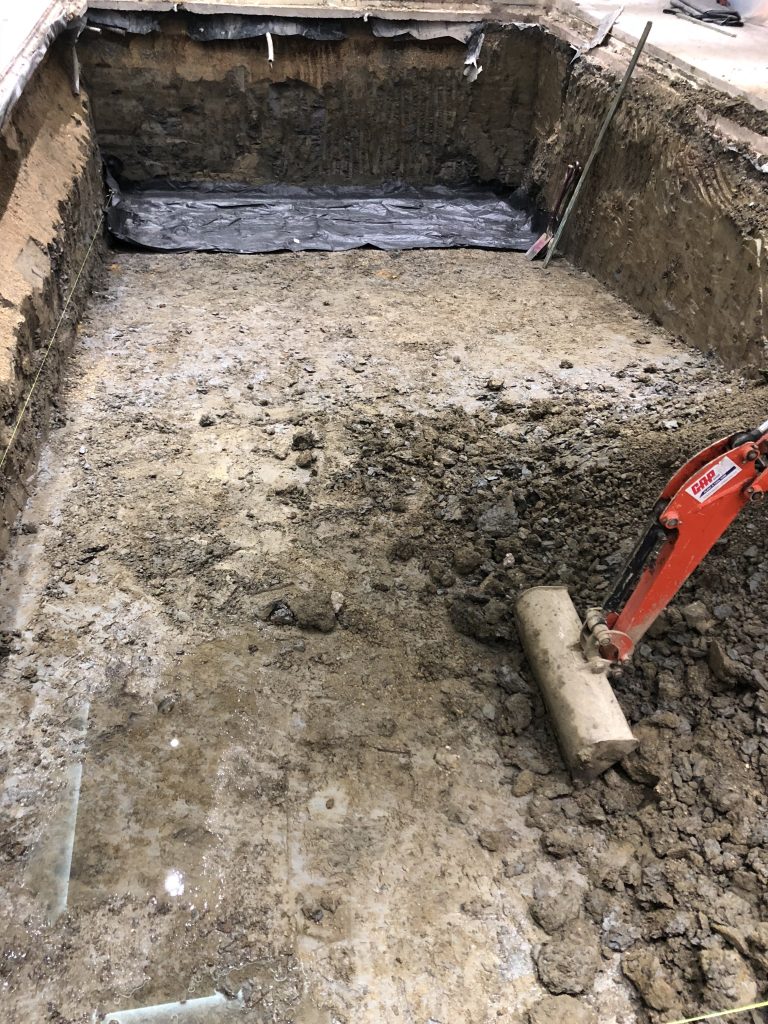
With such a small machine our previous experiences told us that we needed to make removal of the excavated material as easy as possible, so a number of conveyors were linked together to take the material from the pool area to a waiting skip. Once this operation was completed we could then reverse the conveyors and use them to bring materials back in to the pool for construction.
The construction process was to involve the formation of an insulated reinforced concrete swimming pool shell using pneumatically sprayed concrete. The benefit of this method of construction is that of both speed and strength, as both pool wall and floor are a single continuous structure.
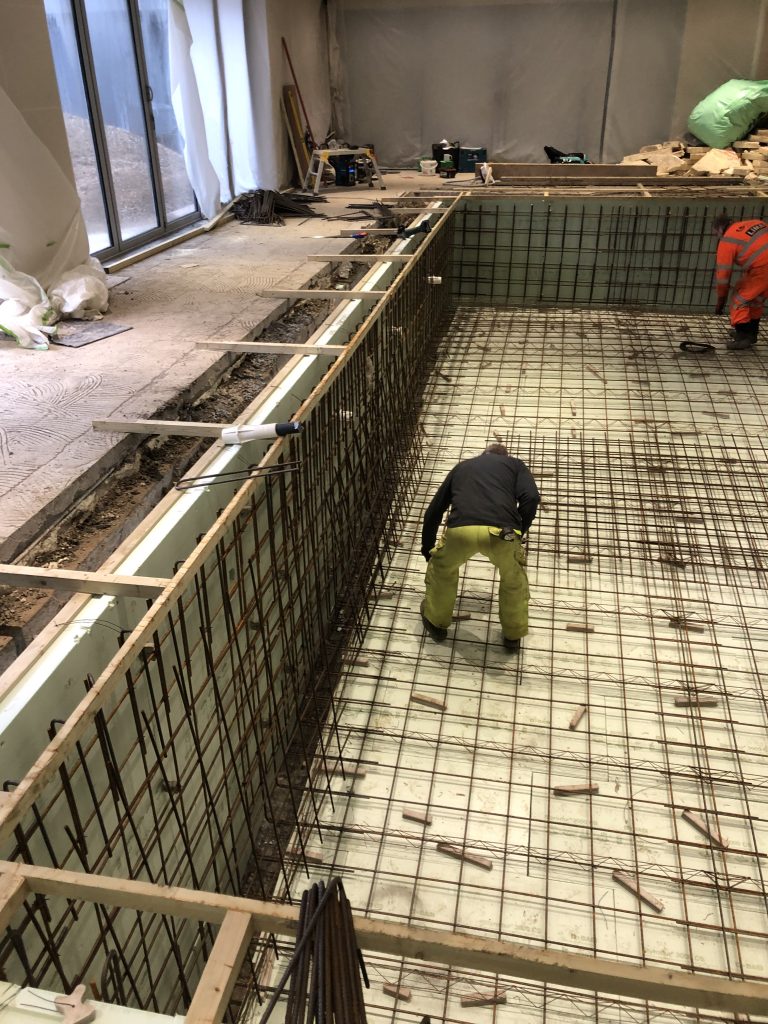
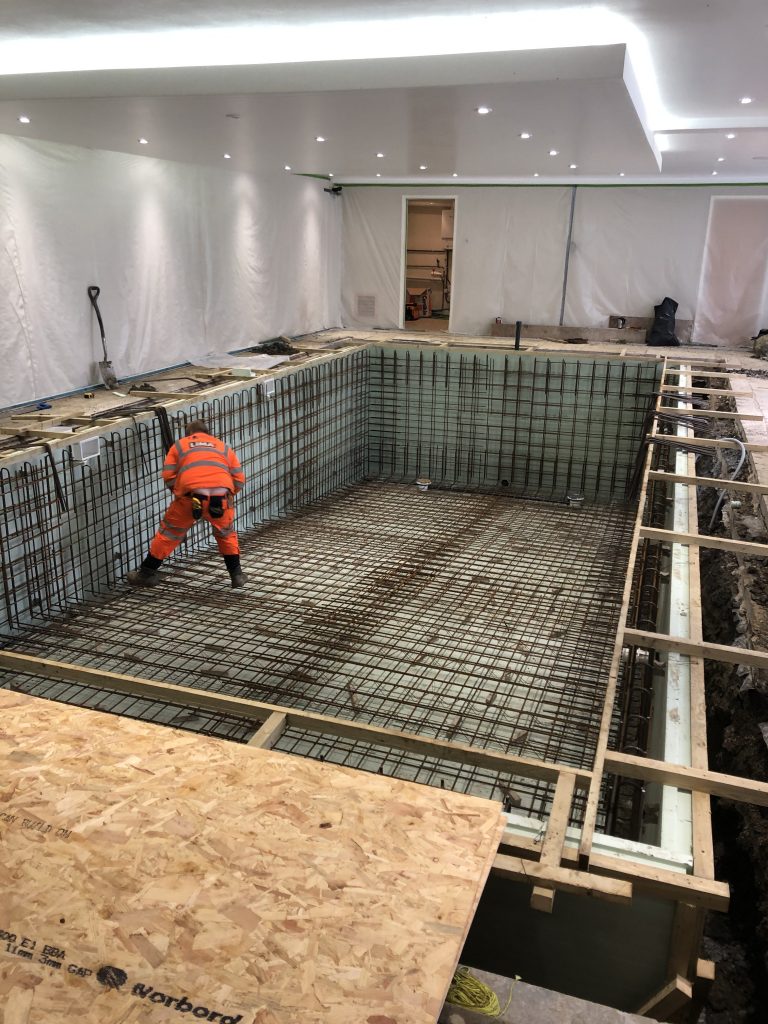
Our brief/instruction from the insurers were that the pool should as far as practical match the specification of the existing, that said due to the benefit of using concrete we were able to form nice curved corner entry steps in to the pool.
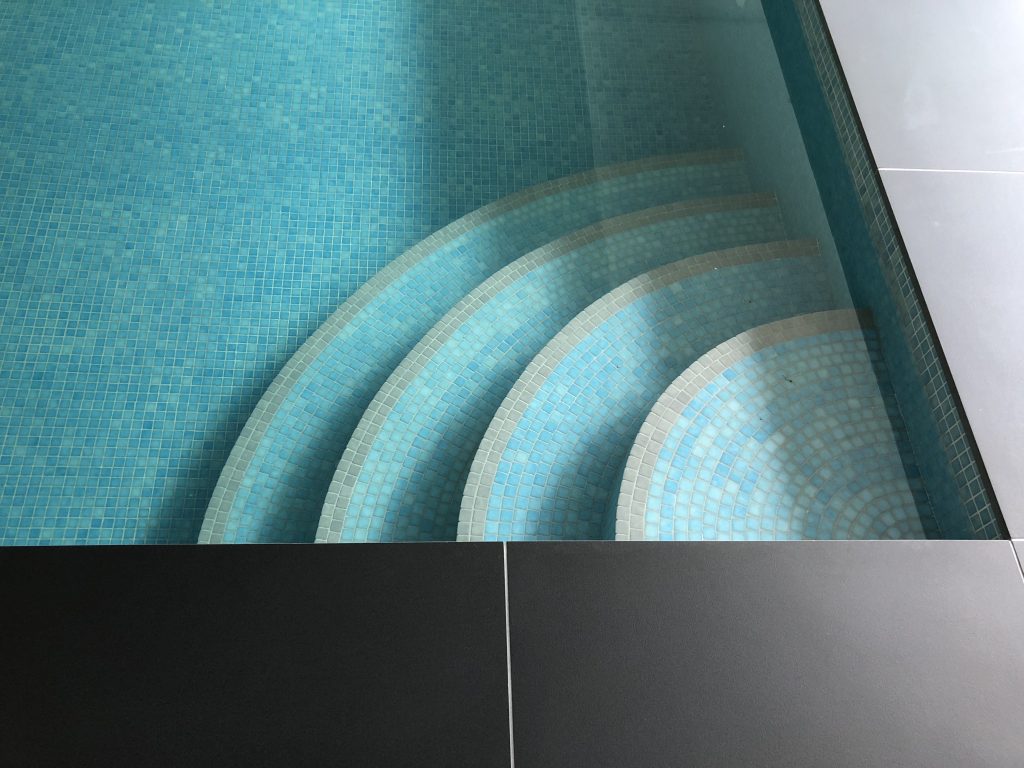
The final finish of the pool would be a mosaic tile.

Alongside the swimming pool construction once completed the pool surround and the reinstatement of the underfloor insulation, heating, screed and final tiling could take place.
